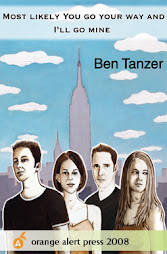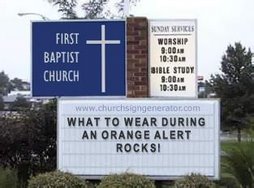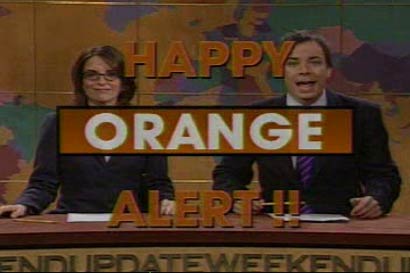 Kari Kraus
Kari KrausIt is one thing to be able to discover in life what you truly love to do, and have the ability and time to do it well. However, to be able to transfer that love and understanding to a student is a whole new set of skills that few possess. In a time when schools are cutting art budgets for sports programs, independent and city run programs are becoming increasingly vital for our youth and our culture. Just as we strive to support the independent artist with need to support the education of the youth on every level. When a child is allowed the opportunity to let their minds focus and create the benefits can be substantial.
In the Western Suburbs there are not too many opportunities for a young artist, but Batavia's Kari Kraus, and everyone at Water Street Studio and the Batavia Artists Association, is making a major difference in her community. In her role of Director of Educator for the center is able to pass down to joy for art to her students. In her personal work she uses fabrics and dyes to create intense patterns and installations. She takes an energetic and creative approach in everything she does, and the result have been incredible.
Recently, Kari was kind enough to answer a few of my questions.
Orange Alert (OA): Your work with dyes and fabrics are fascinating. Can you talk a little about your process?
Kari Karus (KK): I mix all my dyes from a powder form to create stock solutions, then from there I mix the dyes with other chemicals to prepare the dye bath. In terms of methods used when making my work, I use a lot of Shibori techniques. Shibori is a Japanese term that describes a wide range of resist methods for fabrics. The resists can include folding, twisting, stitching, binding, and compressing the fabric in different ways to create patterning on the surface of the cloth. A method that I use often is arashi. Arashi is a form of Shibori and it means rain/storm in Japanese due to the diagonal wave-like patterning that occurs. Traditionally the fabric is wrapped around a pole, but I do it on a much smaller scale since my pieces are smaller in general.
OA: Is there any way to control the design or appearance of each piece?
KK: You do have control over the final product to some degree, however much of what I do does take on a mind of its own. The technique I use affects the level of control over the end product. For example, if I am stitching into the fabric, then I have more control than if I arashi the fiber. When dying, the type of fiber also affects the end product. Wicking is the way in which the fiber absorbs the dye by means of capillary action. So, basically depending on the fiber, the dye will seep into the resisted areas in different ways and rates that affect the design. I really enjoy that the pieces take on the characteristics of the fiber and that, in combination with my intentions for the piece, make a unique collaboration between artist and medium.
OA: Do you feel that living in a smaller town has hindered your career as an artist in any way?
KK: No, I love being a part of a smaller community. I was born and raised in Batavia, IL. I feel that my life here is so rich and I derive so much of my inspiration from my surroundings. I feel that living here hinders me in no way. Yes, I believe that there are other opportunities elsewhere, but with the Water Street Studios project and my roots here, I just feel really content and grounded. I feel that Batavia is a great middle ground that provides me with balance. Not to mention Chicago is a relatively short commute, it is less than an hour away so I can easily get to the city if need be.

OA: How did you get involved in the Water Street Studios project and what is your role there?
KK: Let me begin by giving a explanation of the goal of the project: We are converting an old industrial warehouse in Batavia into a 16,000 square foot art center equipped with 28 artist studios, classrooms, and gallery space. It will be a fantastic space for artists and the community alike to gather and share in a collective creativity and passion for the arts.
I got involved while attending the annual Art in Your Eye festival in Batavia and walked past a booth for the Batavia Art Center (before we had named ourselves Water Street Studios). At that time I was looking into renting a studio space or possibly partnering with them and the company I worked for at the time. I had been the Assistant Director of a non-profit art school and wanted to expand that brand to this area. After attending a few meetings, I found myself so energized and excited about the project that I wanted to be a part of it in any way possible. When it did not work out for my previous job to partner, I still continued to attend meetings and soon became so active that I was made their Director of Education. Like a dream come true, I was able to begin building our non-profit school of art from the ground up, as one of the founding artists on the project. I currently am operating the art school out of our temporary location at the 160 W. Wilson store. There I recruit teachers, create a schedule, coordinate all of the classes, handle payment and registration, draft the policy and procedures for the school, and market the classes to name a few of my duties.
OA: I’ve heard there is a certain tact and skill that goes into teaching art. The center has only been open for a few months, how do you feel the classes are going and where do you see the center going in the future?
KK: Our temporary location opened on November 25th, so we have only been open a little while but have had success in terms of gaining public attention and awareness. I see the school being quite a success in the future. There is a need in this area for the type of arts education that we will bring to the table. Classes have been going well at the store and we are beginning to gather some great students.
OA: What is next for Kari Karus?
KK: I am entirely dedicated to the Water Street Studios project and will continue to work day and night to get the project completed and up and running. The center, which is scheduled to open in May, will be an amazing asset to the community. I would love to get back to making work on a more regular basis as well. The project takes up the majority of my time and that in combination with my regular full time job does not leave a lot of time for creating work, so next for me is making work again!

Bonus Questions:
OA: Do you see the Fox River Valley as having a flourishing art scene? Besides Water Street Studios where could someone look to find it?
KK: I feel that Water Street will help the Fox River Valley become a focal point for the arts in this area. This project is the beginning of Batavia’s renaissance and promises to help put Batavia on the map as a center for the arts. Besides Water Street, there are many small galleries and individual artist studios to see in the area. There is tremendous talent in the Fox River Valley and the art center will begin to bring it all together in a fantastic package and really help generate this collective creativity.
OA: What types of music do you enjoy and who are a few of your favorites?
KK: I really like and am open to a wide range of music styles and artists. I have to say that I really love classic rock, AC/DC and ZZ Top are two favorites from that category, and in addition to that I like, Frank Sinatra, TLC, The Killers, and Bjork.
+by+Nick+Volkert).jpg)



























































